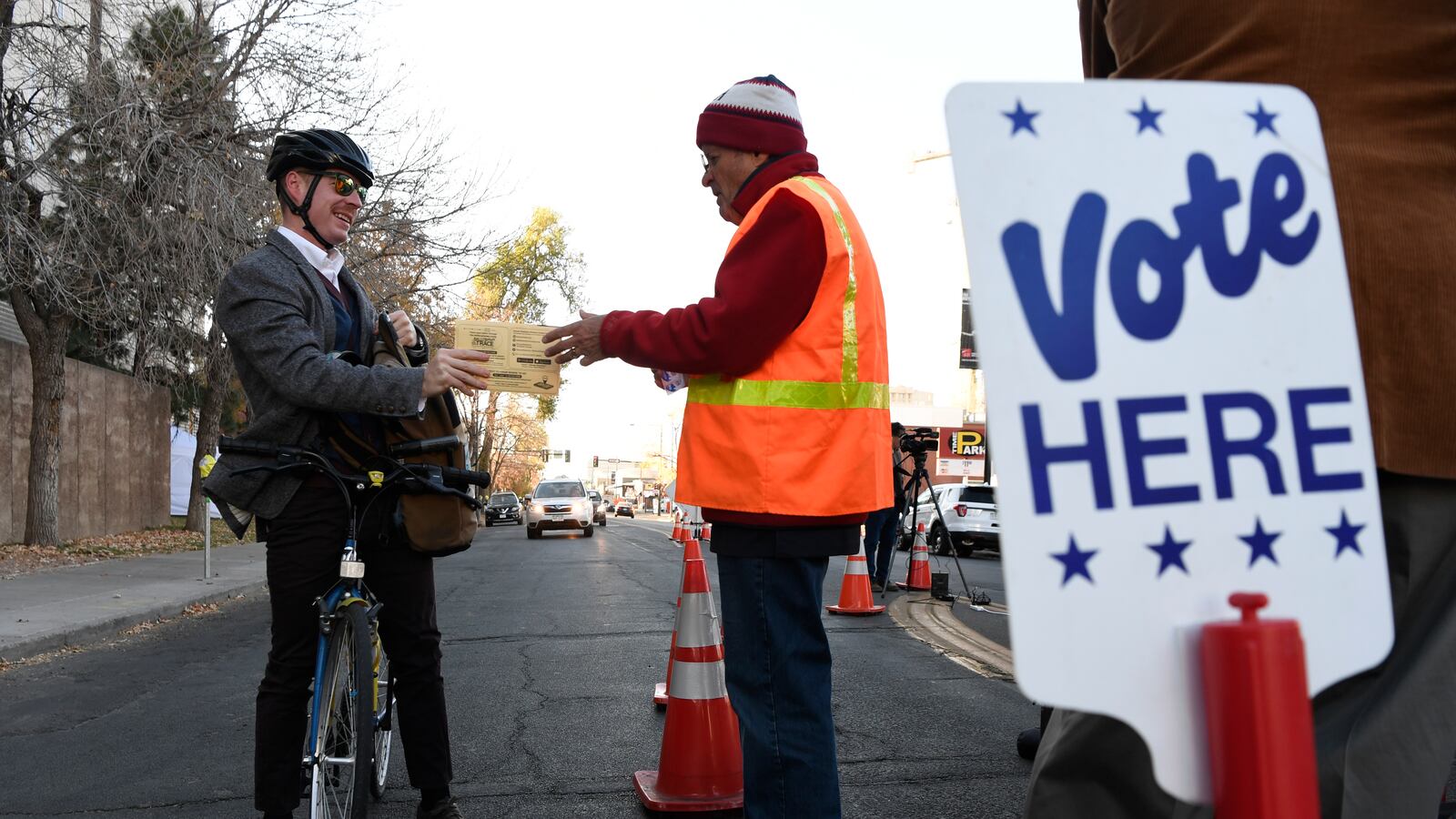Elections have consequences, goes the common saying — and that turns out to be true in schools.
A new study finds that electing a Democrat for governor leads to more money being spent in districts with more students of color, though there’s no evidence that meant higher test scores or smaller achievement gaps.
“School districts with a high share of minority students receive significantly greater transfers from the state government than other districts when a Democrat is elected,” write researchers Andrew Hill and Daniel Jones in the peer-reviewed Journal of Economic Behavior and Organization.
It’s one of only a few studies to directly examine how politicians’ partisan affiliation affects education policy. Another recent analysis found that Democratic school board members in North Carolina led to more racially integrated schools.
Of course, state governors don’t unilaterally make education policy, but they are likely to have significant sway, as this study suggests.
In order to isolate the effect of electing a Democrat versus a Republican, the latest study looks at governors’ races between 1990 and 2013; the paper focuses on 67 closely decided races of the nearly 300 elections. The idea of this common research approach is that the results of a narrowly decided election are essentially random.
First the researchers look at whether a governor’s party led to a greater overall increase in education spending. The effects here were modest: Democratic governors increased K-12 spending by about $100 per person more than Republicans, though there was no difference in higher education expenditures.
But when looking at how resources were distributed — rather than how much money was spent overall — the results were more stark.
Electing a Democratic governor led to an increase of about $500 per student for districts with a majority of black and Hispanic students, relative to whiter districts, simply because under them the money was distributed evenly between high-minority and whiter districts. In contrast, under Republicans total spending was higher in whiter districts.
Similarly, the study finds that Democratic governors targeted additional money to colleges and universities that serve more students of color.
So did this this distribution of spending lead to higher achievement or smaller test score gaps? Apparently not, according to the researchers’ analysis of the federal NAEP test.
“We find no evidence that a Democratic governor leads to higher NAEP scores during her term,” Hill and Jones write. “Moreover, despite the large shift in funds to school districts with a large share of minority students, we do not observe a shrinkage of the black-white score gap.”
It’s not clear why that’s the case — and perhaps surprising in light of recent research showing that students benefit when more money is spent on schools.
It could be that other policy changes by governors swamp school spending effects, that gains from school spending take several years to manifest on NAEP, or that spending went to areas that might be beneficial but don’t show up in test scores. It’s also possible that the increase in spending was simply not an effective way to improve schools.
The paper also examines why governors from different parties distribute money differently — is it based on politics or policy? It looks to be more the latter. Democrats were not any more likely to send money to districts with higher share of Democratic voters or electorally competitive districts.
But in other respects governors do seem to be affected by politics. “Lame duck” Democrats — those in their final years in office who could not run for re-election — seemed to lead to a greater increase in overall spending.
K-12 education spending “increases when a Democratic governor is elected, and this increase is substantially larger during ‘lame duck’ terms,” the study says. “It seems as if governors are constrained by political considerations when increasing spending on elementary and secondary education; although it increases, their preferences might be for even larger increases.”


